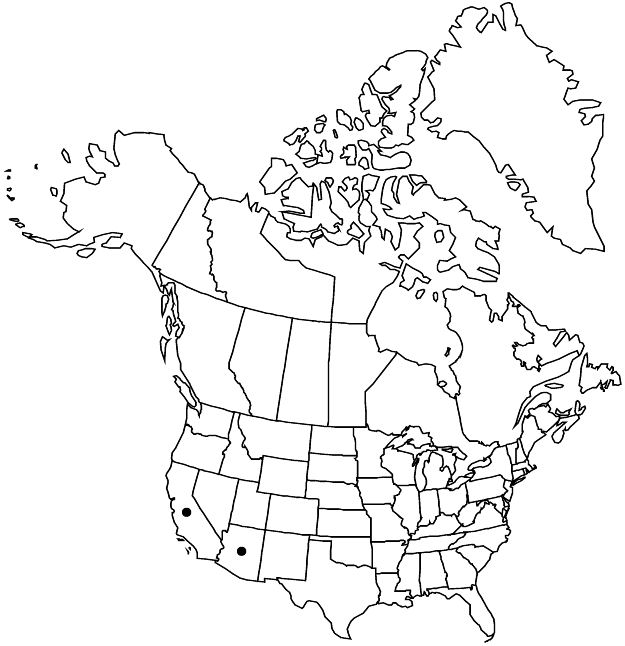Condalia globosa var. pubescens
Proc. Calif. Acad. Sci., ser. 4, 12: 1087. 1924.
Shrubs or small trees, 1–4(–6) m; primary branches usually not thorn-tipped, secondary branches suppressed, hispidulous, thorn-tipped, with short shoots; internodes 2–7 mm. Leaves: petiole 1–2 mm; blade dull green, occasionally burnt orange abaxially, spatulate to spatulate-elliptic, 3–13(–22) × 1.5–5 mm, subcoriaceous, margins entire, not revolute, apex obtuse to mucronate, surfaces sparsely to densely hispidulous or puberulent, abaxial intervein surfaces microvesiculate, not appearing waxy; venation thick and raised, conspicuous abaxially. Inflorescences on short shoots, 1–7-flowered. Pedicels 2.5–4.5(–6.5) mm. Flowers: sepals deciduous in fruit; petals 0. Drupes usually globose, 3.4–5.1 mm; stones 1-seeded.
Phenology: Flowering mainly Jan–Apr, sporadically year-round.
Habitat: Dry desert washes, drainages, canyons, open slopes, creosote bush scrub.
Elevation: 100–1500 m.
Distribution

Ariz., Calif., Mexico (Baja California, Baja California Sur, Sonora).
Discussion
Selected References
None.